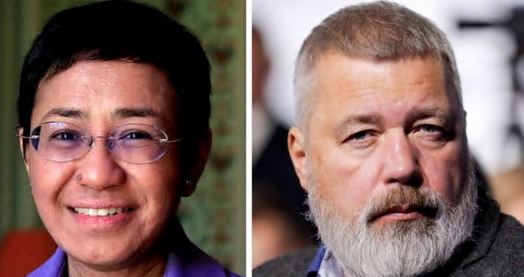The Rights of Journalists as Human Rights Defenders

Human Rights Agency congratulates journalists Maria Ressa and Dmitry Muratov, Nobel Peace Prize laureates. We regret that anti-media rhetoric and attacks on journalists and media workers continue to increase.
Journalists are responsible for seeking the truth, giving it context, and providing it to public to ensure new conversations and representation. They are on the front line of defending and promoting the rights of all citizens to freedom of expression and access to information (Media4Democracy, 2020). The global community has the obligation to prevent attacks against journalists and human rights defenders and create a safe environment for their work. A free press is essential to ensure the public’s rights to have access to accurate information so that the governments and institutions are held responsible (Article19, 2019).
Journalists and media workers usually experience threats and attacks when doing their profession, the scale and number of which has increasingly grown in recent years. According to UNESCO report (2021), the proportion of journalists killed in non-conflict situations has increased, and exceeding the number of those killed in armed conflicts since 2017. Another report by the Director-General of UNESCO (2020) showed that between 2010 and 2019, nearly 900 journalists were killed while doing their jobs. The reports stated that in 2019, Latin American and Caribbean regions represented for 40% of all killings registered worldwide, followed by the Asia and pacific region with 26%. With two killings per week on average, journalists and media workers are exposed to danger in the pursuit of facts (UNESCO, 2021). UNESCO’s Issue brief Safety of Journalists Covering Protests – Preserving Freedom of the Press During Times of Civil Unrest, identified 125 cases of attacks on or arrest of journalists that were covering demonstrations in 65 countries between 1 January 2015 and 30 June 2020, with at least 10 journalists having being killed.
Death is not the only risk journalists are facing. Attacks on the press can take the form of threats, kidnappings, arrests, imprisonments, or offline and online harassment with women being target in particular (UNESCO Chief, 2020). In recent years, OHCHR (2019) has reported an increase in the scale and number of attacks against the safety of journalists and media workers, affecting their ability to exercise freedom of expression, including threats to prosecutions, arrests, imprisonment, denial of their access and failure to investigate and prosecute crimes against them.
Moreover, besides experiencing the same kind of an increasingly hostile environment for journalists risks as their male peers, women journalists are also often targeted specifically because of their gender. When carrying out their professional duties, women journalists can be victims to specific dangers, including sexual assault, online harassment, mob-related sexual violence; or sexual abuse while in captivity. Many of these crimes are not reported, as a result of cultural and professional stigma. While the substantial majority of journalists killed are men, killings of women journalists are increasing. Estimates from UN Women indicate that 1 in 3 women worldwide experience physical or sexual violence during their lifetime, as well as verbal and psychological abuse. Attacks on female journalists lead to psychological and physical harm, self-censorship, or avoiding certain types of reporting, or withdrawal from journalism altogether, which has an important impact on freedom of speech and diversity in the media, and can extend inequalities in newsrooms (UNESCO, 2021). UNESCO’s Global Survey on Online Violence against Women Journalists (2020) showed that 73% of women journalists who responded had experienced online violence in the course of their work. Besides, 25% had received threats of physical and 18% sexual violence. Also, 20% reported being attacked offline in connection with online violence they had experienced.
As stated by the UN High Commissioner (2020), when journalists are targeted in the context of protests and criticisms, the aim is to silence all of civil society, which is of deep concern. When they are not allowed to seek and publish information freely, independently, and safely, citizens’ right to freedom of information is restricted. When journalists report abuses of democratic processes, they promote transparency, accountability, and the rule of law while also enhancing the possibility of citizens’ participation in public life. Thus, all the states worldwide should ensure creating and maintaining a free and safe environment for journalists, media workers, and civil society. They should also ensure compliance of their laws and policies with the obligations under international human rights law.
References
en.unesco.org/news/journaliststoo-violence-against-women-journalists, 2021
en.unesco.org/sites/default/files/unpa_focal_points_on_soj_brochure_2021.pdf
news.un.org/en/story/2020/11/1076632 on International Day to End Impunity for Crimes against Journalists
www.ohchr.org/EN/Issues/SafetyOfJournalists/Pages/index.aspx
en.unesco.org/news/unescos-global-survey-online-violence-against-women-journalists
www.article19.org/issue/safety-of-journalists-and-human-rights-defenders/
Media4Democracy (2020). Protecting The Safety Of Journalists Protecting Freedom Of Expression – A Handbook For Eu Delegations, https://media4democracy.eu/wp-content/uploads/2020/07/Final-M4D-Safety-of-Journalists-Handbook.pdf 2020

